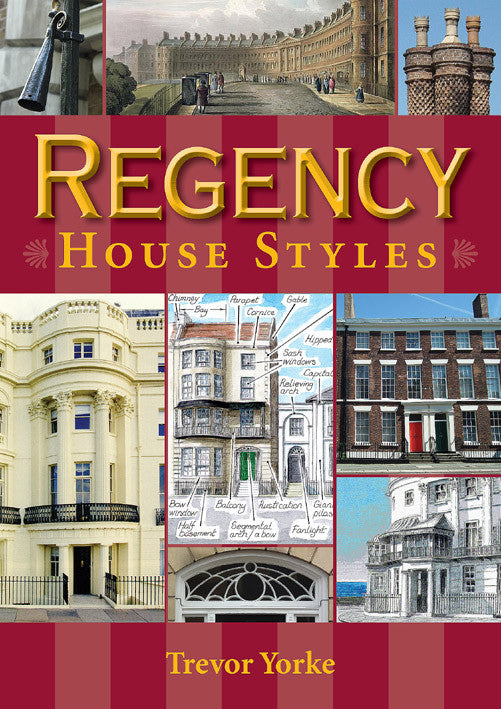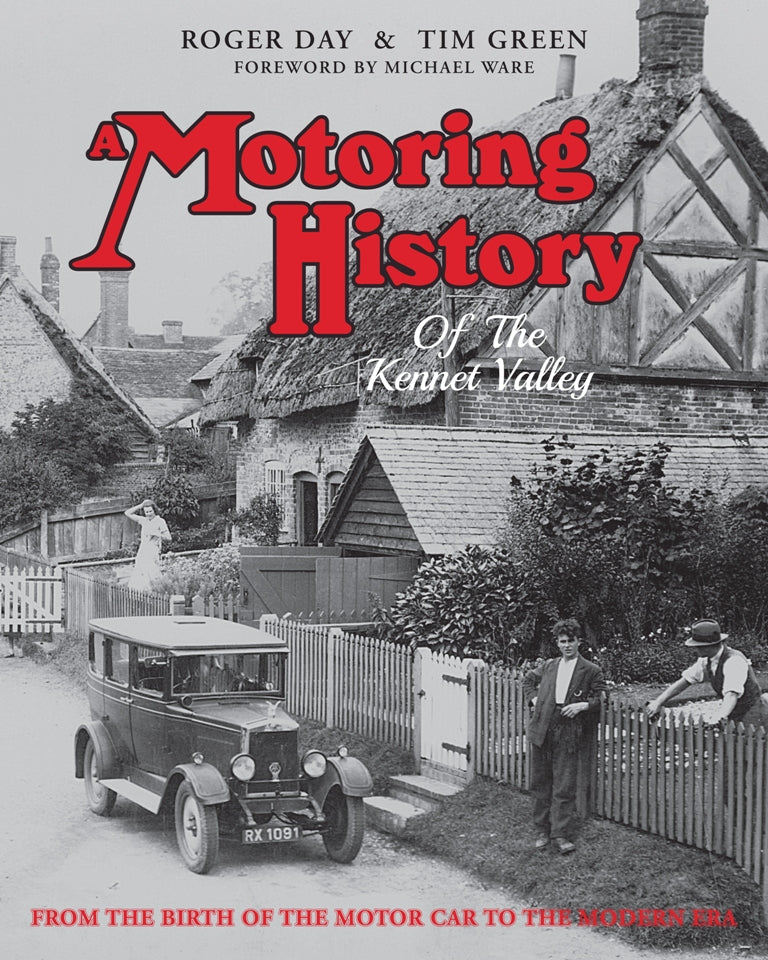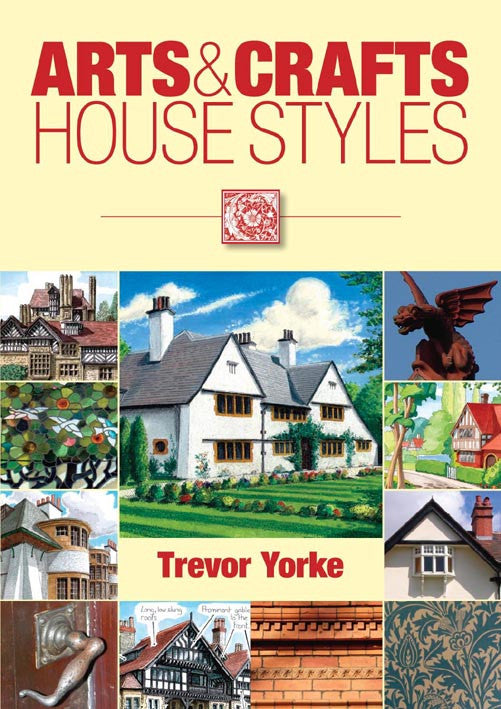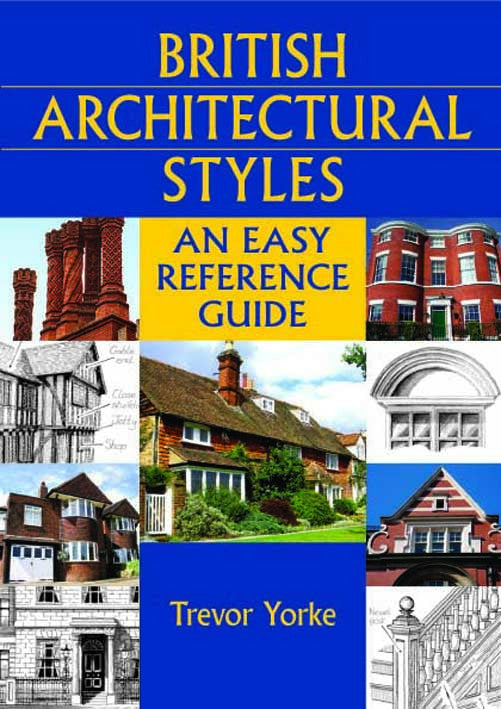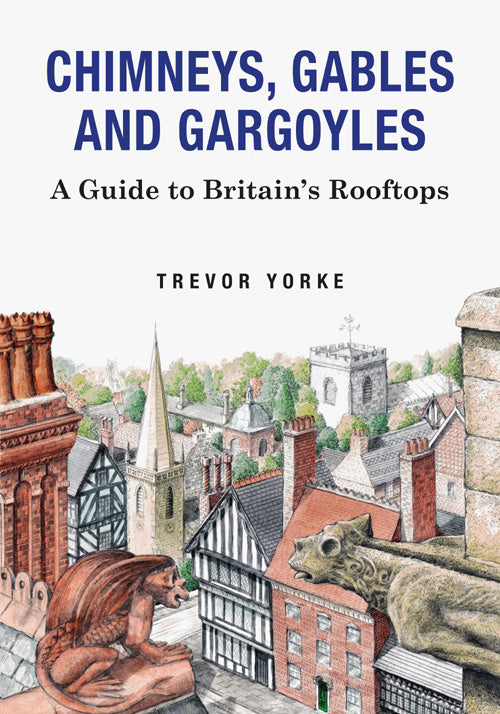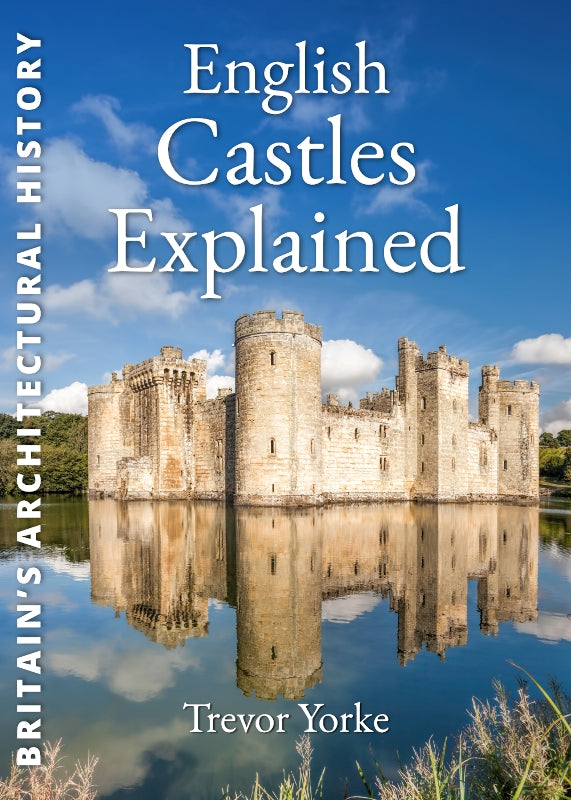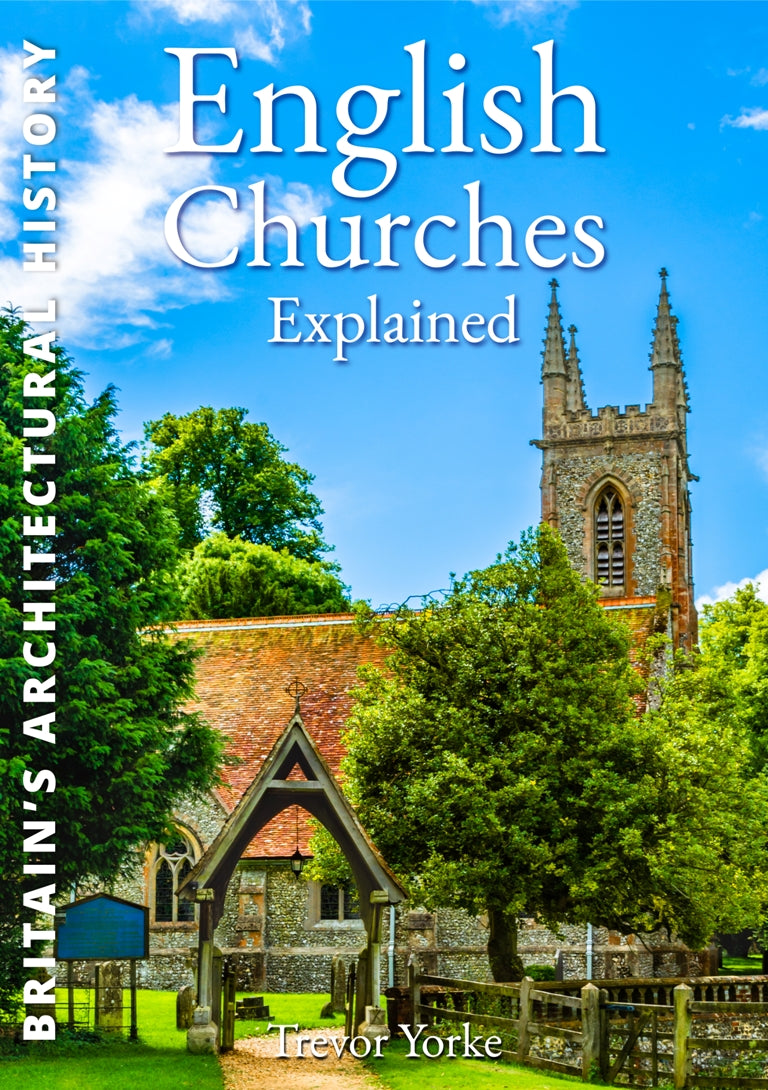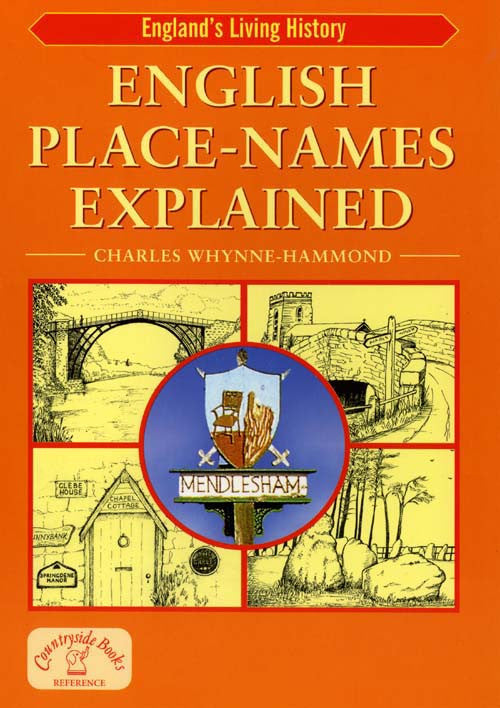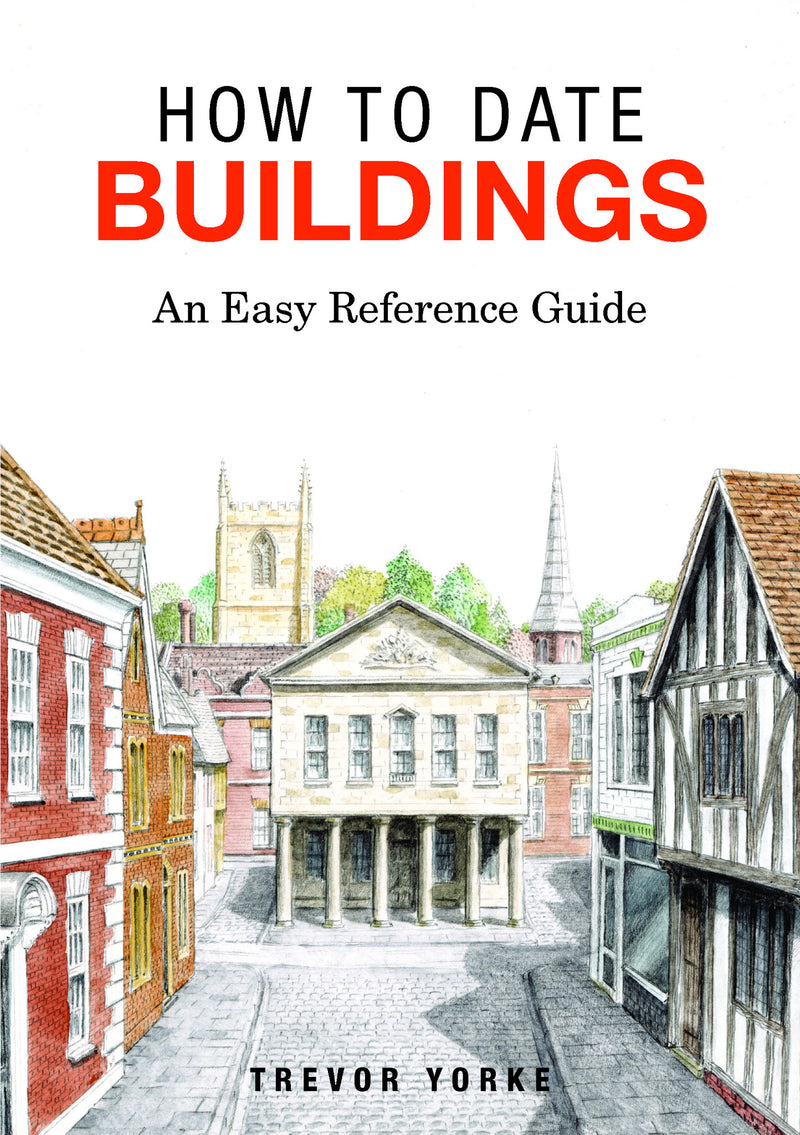{"id":9389280333,"title":"Regency House Styles","handle":"regency-house-styles","description":"\u003cp\u003eUsing his own drawings and full colour photographs, Trevor Yorke, explains the background and describes the architecture, fixture and fittings that made the Regency period so distinctive.\u003c\/p\u003e\n\u003cmeta charset=\"utf-8\"\u003e\n\u003cp style=\"text-align: justify;\"\u003eThe word 'Regency' has long been associated with elegance conjuring up visions of fashionably dressed ladies and gentlemen promenading along streets lined with refined terrace houses and villas. Although strictly covering the decade from 1811 when King George III fell ill until his death in 1820, the period is often used loosely to include the latter years of the 18th century up until the time Queen Victoria came to the throne in 1837.\u003c\/p\u003e\n\u003cp style=\"text-align: justify;\"\u003eThe era saw a good deal of change. The industrial revolution marked the spread of factories; there were rapid developments in transport; global expansion of commerce and trade; and groundbreaking legislation including the abolition of slavery. These changes created an unprecedented demand for new houses especially from a newly wealthy middle class and offered a multitude of choice in furniture and fabrics to decorate them. Spa towns such as Cheltenham and Leamington developed during this time along with seaside resorts such as Brighton.\u003c\/p\u003e\n\u003cp style=\"text-align: justify;\"\u003eThe author also introduces the notable architects of the day including John Nash who created Regent Street, Marble Arch and designs for Buckingham Palace; Sir John Soane who built Dulwich Picture Gallery and his own house in Lincolon's Inn Fields; and Henry Holland who built Carlton House for the Prince Regent, Woburn Abbey and Althorp and laid out parts of Knightsbridge including Sloane Square.\u003c\/p\u003e\n\u003cp style=\"text-align: justify;\"\u003eA5 (softcover) 80 pages\u003c\/p\u003e\n\u003cp style=\"text-align: justify;\"\u003eAuthor: Trevor Yorke\u003c\/p\u003e\n\u003cp style=\"text-align: justify;\"\u003eISBN 9781846743108\u003c\/p\u003e","published_at":"2017-03-19T19:47:00+00:00","created_at":"2017-03-19T19:54:42+00:00","vendor":"Countryside Books","type":"Books","tags":["Interior design","Regency","Trevor Yorke"],"price":795,"price_min":795,"price_max":795,"available":true,"price_varies":false,"compare_at_price":null,"compare_at_price_min":0,"compare_at_price_max":0,"compare_at_price_varies":false,"variants":[{"id":34393473293,"title":"Default Title","option1":"Default Title","option2":null,"option3":null,"sku":"","requires_shipping":true,"taxable":false,"featured_image":null,"available":true,"name":"Regency House Styles","public_title":null,"options":["Default Title"],"price":795,"weight":200,"compare_at_price":null,"inventory_quantity":-15,"inventory_management":null,"inventory_policy":"deny","barcode":"9781846743108","requires_selling_plan":false,"selling_plan_allocations":[]}],"images":["\/\/countrysidebooks.co.uk\/cdn\/shop\/products\/Regency_Styles_cover_300_res.jpg?v=1511387136"],"featured_image":"\/\/countrysidebooks.co.uk\/cdn\/shop\/products\/Regency_Styles_cover_300_res.jpg?v=1511387136","options":["Title"],"media":[{"alt":"Regency House Styles book cover. Guide to English architectural style.","id":279394910339,"position":1,"preview_image":{"aspect_ratio":0.707,"height":709,"width":501,"src":"\/\/countrysidebooks.co.uk\/cdn\/shop\/products\/Regency_Styles_cover_300_res.jpg?v=1511387136"},"aspect_ratio":0.707,"height":709,"media_type":"image","src":"\/\/countrysidebooks.co.uk\/cdn\/shop\/products\/Regency_Styles_cover_300_res.jpg?v=1511387136","width":501}],"requires_selling_plan":false,"selling_plan_groups":[],"content":"\u003cp\u003eUsing his own drawings and full colour photographs, Trevor Yorke, explains the background and describes the architecture, fixture and fittings that made the Regency period so distinctive.\u003c\/p\u003e\n\u003cmeta charset=\"utf-8\"\u003e\n\u003cp style=\"text-align: justify;\"\u003eThe word 'Regency' has long been associated with elegance conjuring up visions of fashionably dressed ladies and gentlemen promenading along streets lined with refined terrace houses and villas. Although strictly covering the decade from 1811 when King George III fell ill until his death in 1820, the period is often used loosely to include the latter years of the 18th century up until the time Queen Victoria came to the throne in 1837.\u003c\/p\u003e\n\u003cp style=\"text-align: justify;\"\u003eThe era saw a good deal of change. The industrial revolution marked the spread of factories; there were rapid developments in transport; global expansion of commerce and trade; and groundbreaking legislation including the abolition of slavery. These changes created an unprecedented demand for new houses especially from a newly wealthy middle class and offered a multitude of choice in furniture and fabrics to decorate them. Spa towns such as Cheltenham and Leamington developed during this time along with seaside resorts such as Brighton.\u003c\/p\u003e\n\u003cp style=\"text-align: justify;\"\u003eThe author also introduces the notable architects of the day including John Nash who created Regent Street, Marble Arch and designs for Buckingham Palace; Sir John Soane who built Dulwich Picture Gallery and his own house in Lincolon's Inn Fields; and Henry Holland who built Carlton House for the Prince Regent, Woburn Abbey and Althorp and laid out parts of Knightsbridge including Sloane Square.\u003c\/p\u003e\n\u003cp style=\"text-align: justify;\"\u003eA5 (softcover) 80 pages\u003c\/p\u003e\n\u003cp style=\"text-align: justify;\"\u003eAuthor: Trevor Yorke\u003c\/p\u003e\n\u003cp style=\"text-align: justify;\"\u003eISBN 9781846743108\u003c\/p\u003e"}
Regency House Styles
You might also like...
Art Deco House Styles
£6.95
Bridges Explained
£9.99

